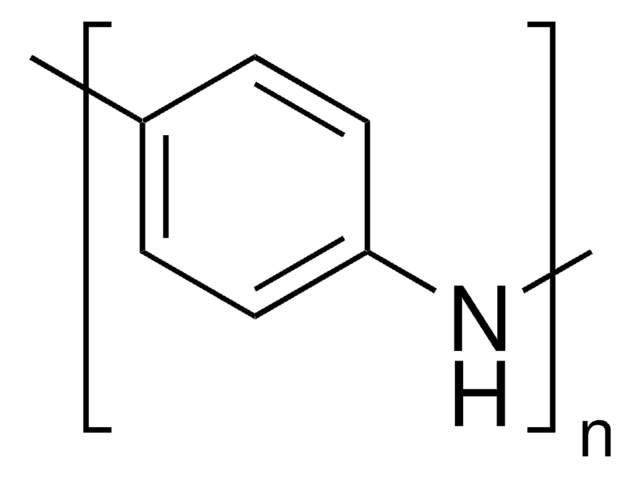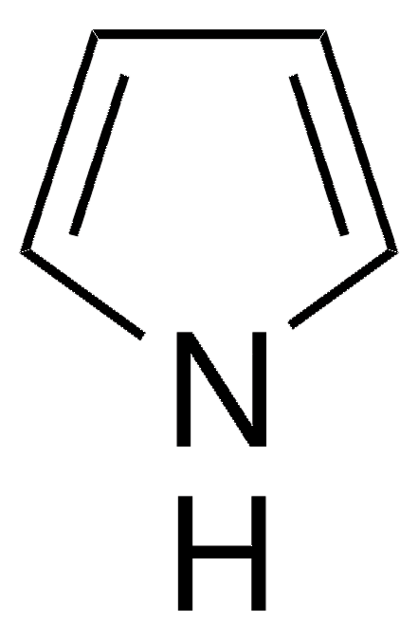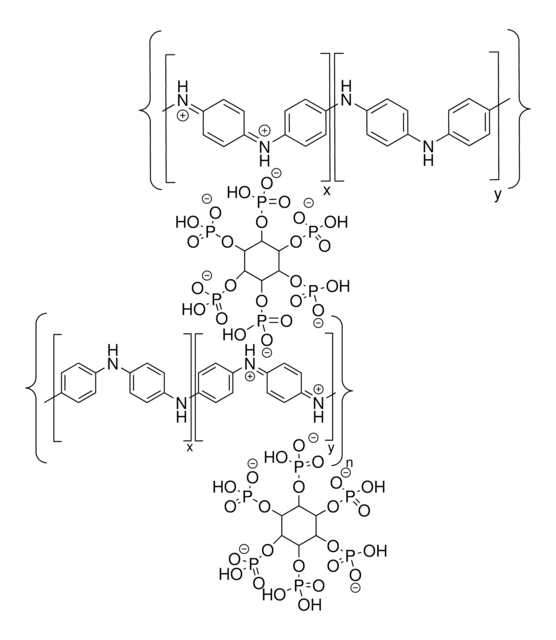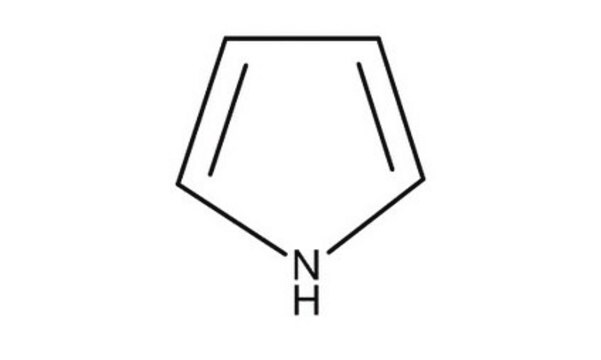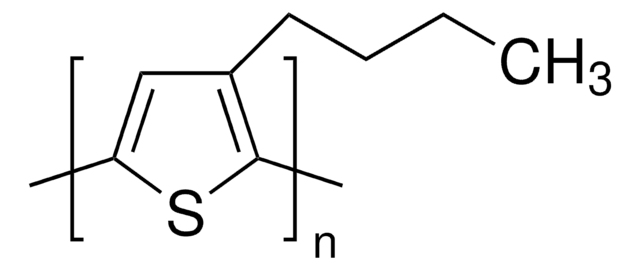Kluczowe dokumenty
482552
Polypyrrole
doped, 5 wt % dispersion in H2O, conductivity >0.005 S/cm (dried cast film)
Synonim(y):
PPy
About This Item
Polecane produkty
zawiera
proprietary organic acids as dopant
charakterystyka ekologicznej alternatywy
Design for Energy Efficiency
Learn more about the Principles of Green Chemistry.
sustainability
Greener Alternative Product
stężenie
5 wt % dispersion in H2O
kategoria ekologicznej alternatywy
ciąg SMILES
[nH]1cccc1
InChI
1S/C4H5N/c1-2-4-5-3-1/h1-5H
Klucz InChI
KAESVJOAVNADME-UHFFFAOYSA-N
Opis ogólny
- Ion exchange capacity.
- Electrochromic effects.
- Redox activity.
- Corrosion resistant.
- Catalytic activity.
Zastosowanie
- conductive sensors for quality monitoring
- blended with nanotubes for supercapacitors
- nanowire actuators
- biosensors for drug delivery
- CO2 absorption materials
Opakowanie
Kod klasy składowania
10 - Combustible liquids
Klasa zagrożenia wodnego (WGK)
WGK 3
Temperatura zapłonu (°F)
Not applicable
Temperatura zapłonu (°C)
Not applicable
Środki ochrony indywidualnej
Eyeshields, Gloves, type ABEK (EN14387) respirator filter
Wybierz jedną z najnowszych wersji:
Masz już ten produkt?
Dokumenty związane z niedawno zakupionymi produktami zostały zamieszczone w Bibliotece dokumentów.
Klienci oglądali również te produkty
Produkty
The application of conducting polymers at the interface with biology is an exciting new trend in organic electronics research.
While dye sensitization as the basis for color photography has been accepted for a very long time,1 attempts to use this principle for the conversion of solar light to electricity generally had resulted only in very low photocurrents, below 100 nA/cm2.2
For several decades, the need for an environmentally sustainable and commercially viable source of energy has driven extensive research aimed at achieving high efficiency power generation systems that can be manufactured at low cost.
Nasz zespół naukowców ma doświadczenie we wszystkich obszarach badań, w tym w naukach przyrodniczych, materiałoznawstwie, syntezie chemicznej, chromatografii, analityce i wielu innych dziedzinach.
Skontaktuj się z zespołem ds. pomocy technicznej

